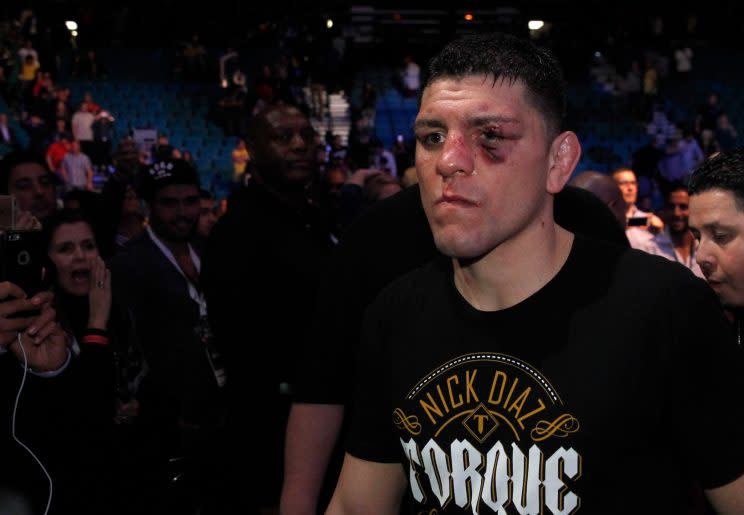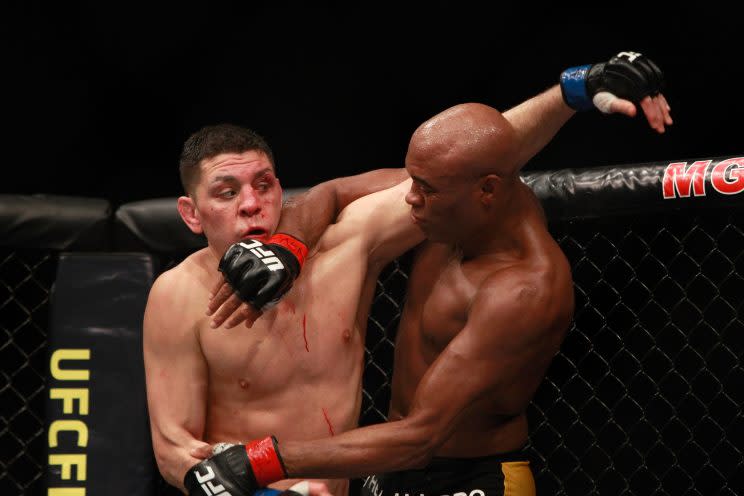Nick Diaz's USADA issue, potential suspension, is a self-inflicted wound

Let’s get this straight: Nick Diaz is not a victim.
Nor does this have anything to do with cannabis, as many have speculated.
This is about Diaz not doing the bare minimum that he is supposed to do. He brought whatever penalties he gets from USADA as a result of his whereabouts violation on himself.
On Thursday, UFC.com reported that Diaz had registered three whereabouts violations failures and thus is subject to discipline by USADA.
Before we get into what a fighter’s responsibilities are and what a whereabouts violation is, let’s put the marijuana talk to rest.
This has nothing — ZERO — to do with Diaz potentially smoking marijuana. Marijuana is only banned in competition. In the UFC, that is a period beginning at 12 p.m. local time the day before a fight until the fighter is tested post-fight.
So if he chooses to do so, Diaz could chain smoke marijuana daily between now and 2020, and if he doesn’t have a fight booked, it’s not a problem.
But part of the UFC’s agreement with USADA is that fighters are required to report their whereabouts. This is so testers know where to go when they want to randomly test a fighter. The element of surprise is a major factor in the testing, so the collectors have to know where the fighters will be at all times so when they want a test, the fighter doesn’t have advance knowledge.
This is true for all athletes, such as Olympians, who are in the USADA testing pool.

The policy understands that occasionally an athlete may make a mistake and forget to update his or her whereabouts. Thus, they can do that twice with no problems. But when it happens a third time, it’s regarded as a potential violation.
This is solely on Diaz. Though he hasn’t fought since he met Anderson Silva on Jan. 1, 2015 — and both fighters failed tests — he’s been in the registered testing pool since the policy went into place because he’s still an active UFC fighter.
He had the option of filing retirement papers with the UFC and he would no longer be subjected to testing. The rules are established if a fighter chooses to un-retire and get back into the pool.
According to the UFC/USADA site, “For athletes who have chosen to remove themselves from the UFC testing pool through retirement, hiatus, or a non-renewal of their contract, they are required to be in the testing pool for 6 months before they can compete.”
It’s all spelled out and Diaz could have avoided whatever penalty he may receive by complying.
That he’s likely to be suspended for a long period is on him and no one else.
Diaz is an outstanding fighter, and one who is highly entertaining to watch. But the rules must apply to all fighters for the system to be effective. Things will be a lot better for all if the fighters get that and understand the testing is there for their protection.
More from Yahoo Sports:



